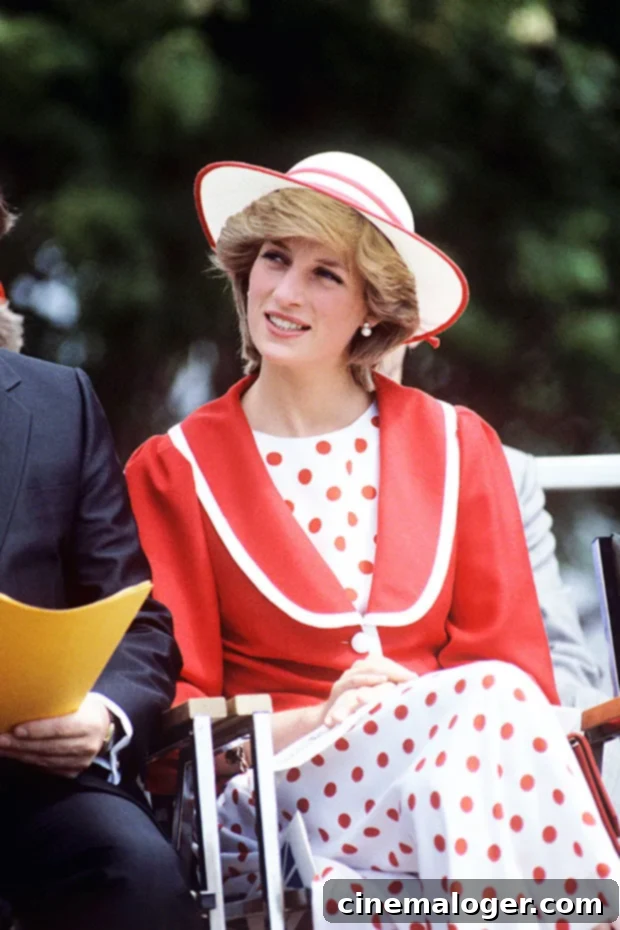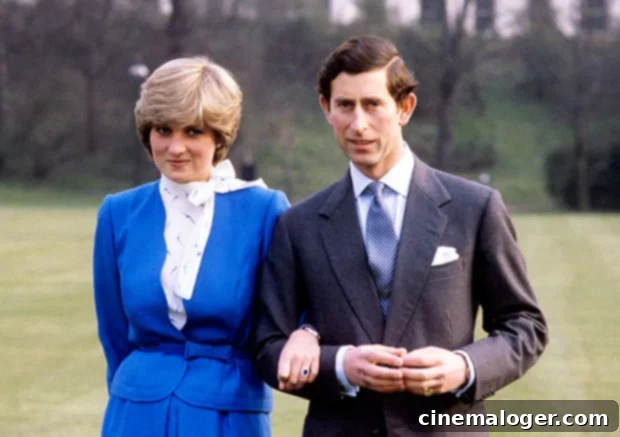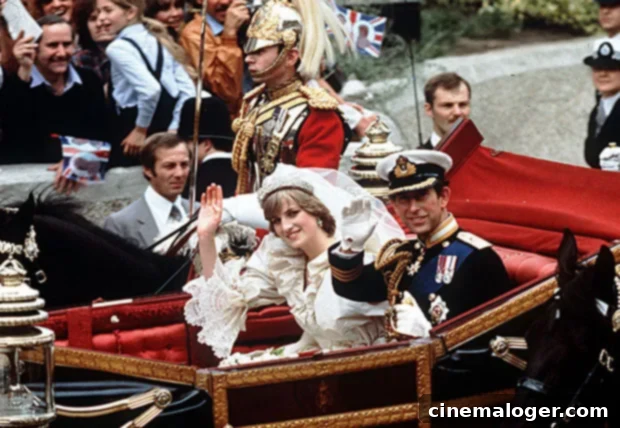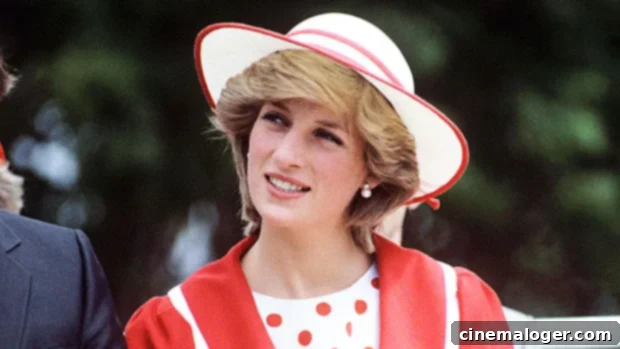Princess Diana’s Enduring Legacy: Essential Facts Beyond Netflix’s The Crown
The highly anticipated fourth season of Netflix’s acclaimed drama The Crown has once again captivated audiences, bringing the captivating narrative of the British Royal Family to screens worldwide. This season, spanning the years 1977 to 1990, delves into some of the most pivotal moments in the monarchy’s recent history, most notably the introduction of Lady Diana Spencer, who would soon become Princess Diana. Portrayed with remarkable authenticity by Emma Corrin, Diana’s journey from a shy kindergarten assistant to a global icon is a central theme, alongside the complex dynamic with Prince Charles (played by Josh O’Connor) and Queen Elizabeth II.
Before you embark on your deep dive into The Crown and witness the dramatization of these historical events, it’s crucial to understand the woman behind the legend – the figure lovingly dubbed “the people’s princess.” Her life, though tragically cut short, left an indelible mark on the world, redefining the role of a modern royal and inspiring millions with her compassion, grace, and unwavering commitment to humanitarian causes. Her story is one of immense public fascination, marked by both fairytale romance and profound personal struggle. To truly appreciate her impact and the narrative presented in The Crown, let’s explore some vital facts about Princess Diana, shedding light on aspects that enriched her extraordinary life and enduring legacy.
1. The Distinction: Why Was Diana a Princess, Not a Duchess Like Kate and Meghan?
One common question that arises for viewers, particularly when comparing royal women across generations, is why Diana was known as “Princess Diana” while Kate Middleton and Meghan Markle are referred to as “Duchesses.” This distinction often causes confusion, but it highlights a specific nuance within royal titling. Officially, Diana was not a “Princess by birth” in the same way, for instance, Prince William and Kate’s daughter, Princess Charlotte, is. The title “Princess” is primarily reserved for biological descendants of the reigning monarch, which in this case, refers to Queen Elizabeth II’s direct lineage.
When Lady Diana Spencer married Prince Charles in 1981, she officially became “Her Royal Highness The Princess of Wales,” a British courtesy title traditionally bestowed upon the wife of the Prince of Wales, who is the heir apparent to the British throne. This specific title, “Princess of Wales,” is distinct from being a “Princess” in her own right. According to royal protocol, for Diana to have used the title “Princess” in front of her given name officially, she would have had to be styled as “Princess Charles,” adopting her husband’s name, as reported by the Daily Express. However, her immense popularity and charismatic connection with the British public led to her being universally and affectionately known as “Princess Diana,” a title that, while technically informal, perfectly encapsulated her unique standing in the hearts of millions.
In contrast, Kate Middleton, upon her marriage to Prince William, became the Duchess of Cambridge, and Meghan Markle, marrying Prince Harry, became the Duchess of Sussex. These are ducal titles granted by the monarch on their wedding day. While they are royal consorts and hold significant positions within the Royal Family, they are not referred to as “Princess Kate” or “Princess Meghan” in the same way Diana was. This difference underscores Diana’s extraordinary bond with the public, which transcended formal titles and solidified her image as truly “the people’s princess.”

2. How Did Diana and Prince Charles Meet, and What Sparked Their Royal Romance?
The courtship between Princess Diana and Prince Charles, as depicted in The Crown, began somewhat unconventionally. Diana Frances Spencer was born into an aristocratic British family; her father was John Spencer, the 8th Earl Spencer, making her a member of the nobility long before her royal marriage. This background meant she moved in circles familiar to the Royal Family, setting the stage for their eventual meeting.
Their initial encounter occurred in 1977 at Althorp, the Spencer family estate, when Diana was just 16 years old. Prince Charles, then 29, was visiting Althorp for a shooting party and, rather interestingly, was dating Diana’s older sister, Lady Sarah Spencer, at the time. This first meeting was fleeting, a casual introduction that likely held no immediate romantic significance for either of them. Diana later recalled thinking of Charles as “jolly” and a “bit of a laugh” during that period.
It wasn’t until three years later, in 1980, that their paths crossed again. This pivotal reunion took place at a mutual friend’s house during a polo outing in Sussex. By this time, Charles’s relationship with Sarah had ended. Diana, by then a young woman of 19, had matured considerably, and Charles was captivated by her. During this encounter, Diana expressed her sympathy for Charles following the recent assassination of his great-uncle and mentor, Lord Mountbatten, reportedly telling him, “You looked so sad when you walked down the aisle at Mountbatten’s funeral. It was the most tragic thing I’ve ever seen.” This empathetic gesture reportedly touched Charles deeply, sparking a renewed interest in Diana.
Their courtship was relatively swift and intense, largely fueled by media speculation. Charles, under increasing pressure to marry and secure the line of succession, found Diana to be a suitable candidate: young, aristocratic, and seemingly wholesome. He proposed to Diana in February 1981, after only a handful of dates, and she accepted. The engagement was officially announced to the world on February 24, 1981, captivating the public and generating immense excitement. Their wedding, held on July 29, 1981, at St. Paul’s Cathedral, was broadcast globally, watched by an estimated 750 million people, and widely hailed as a “fairytale wedding” that promised a new, vibrant chapter for the monarchy.
3. Princess Diana’s Last Words: The Tragic End of a Remarkable Life
While the wedding of Prince Charles and Princess Diana was indeed a global fairytale, their marriage, unfortunately, did not follow the script of a storybook ending. The significant 13-year age difference, coupled with profound incompatibilities and the immense pressures of royal life, led to increasing strain. Both Charles and Diana admitted to affairs during their marriage, contributing to a deeply troubled union that ultimately fractured. After years of public speculation and private turmoil, they separated in 1992, and their divorce was finalized on August 28, 1996.
Tragically, just over a year after her divorce, Princess Diana’s life was cut short in a devastating car crash on August 31, 1997. The accident occurred in the Pont de l’Alma tunnel in Paris, where Diana was traveling with her partner, Dodi Fayed, and their driver, Henri Paul, while being pursued by paparazzi. In an attempt to evade the photographers, Henri Paul lost control of the Mercedes-Benz S280 at high speed upon entering the tunnel. The car struck the 13th pillar in the middle of the tunnel before hitting a wall on the right-hand side, resulting in a catastrophic impact. Dodi Fayed and Henri Paul were killed instantly at the scene.
Princess Diana, though critically injured, was initially alive. Sergeant Xavier Gourmelon, a firefighter who led the response team and was one of the first rescuers on the scene, later recounted the poignant moment. According to Gourmelon, Diana’s last words before she died were, “‘My God, what’s happened?'” (as reported by The Independent). She was in cardiac arrest and suffered severe internal injuries. Despite desperate efforts by emergency services, she was taken to the Pitié-Salpêtrière hospital, where she underwent extensive surgery, but was sadly pronounced dead hours later, in the early morning of September 1, 1997. Her untimely death sent shockwaves across the globe, plunging millions into a profound state of mourning and sparking widespread debate about media intrusion and celebrity privacy.

4. Where Is Princess Diana Buried? Her Final Resting Place
The death of Princess Diana on August 31, 1997, triggered an unprecedented outpouring of public grief, leading to a funeral service that became one of the most watched events in history. Her ceremonial funeral took place on Saturday, September 6, 1997, at Westminster Abbey, attracting an estimated three million mourners on the streets of London and a global television audience of over 2.5 billion. The emotional procession, with her sons Princes William and Harry, her brother, and her former husband walking behind her coffin, remains one of the most iconic and heartbreaking images of the late 20th century.
Following the solemn ceremony, Princess Diana was laid to rest on the same day on the serene grounds of Althorp Park, the historic Spencer family estate in Northamptonshire, England. This sprawling 13,000-acre property has been the ancestral home of the Spencer family for over 500 years and holds deep personal significance for Diana, as it was her childhood home. Her body was interred on a small, secluded island nestled within an ornamental lake known as the Oval Lake, within the Pleasure Garden of Althorp.
The decision to bury Diana at Althorp, rather than in the traditional Spencer family vault at the local church in Great Brington, was a carefully considered one. Her brother, Earl Spencer, explained the family’s reasoning to Newsweek in 2017, stating that it was deemed “the safest place.” Concerns about the security of her grave were paramount. There were genuine fears that her resting place, if accessible to the public, could be targeted by grave robbers or disturbed by unauthorized individuals seeking to capitalize on her fame. Earl Spencer revealed that there had been at least “four attempted break-ins” at the site prior to his comments, underscoring the ongoing need for robust security measures.
The island burial provides a tranquil and secure final resting place, offering both privacy for the family and protection for Diana’s remains. A memorial temple is situated across from the island, providing visitors to Althorp the opportunity to pay their respects and reflect on her life and legacy. This serene environment ensures that “the people’s princess” can rest in peace, surrounded by the natural beauty of her ancestral home, protected from the intrusive public gaze that so often defined her life.

5. The Legacy of Love: What Jewelry Did Prince Harry Inherit From Diana?
Even decades after her untimely passing, Princess Diana’s life, style, and profound impact continue to fascinate the world. Her legacy of compassion, kindness, and dedication to charitable causes lives on vividly through her two sons, Prince William and Prince Harry. Beyond their philanthropic endeavors, tangible reminders of Diana’s personal touch are also visible, particularly through the cherished jewelry pieces inherited by her children, which now grace the fingers and adorn the necks of the women they married.
Perhaps the most iconic piece of jewelry linked to Diana’s legacy is her stunning sapphire engagement ring. This ring, featuring a 12-carat oval blue Ceylon sapphire surrounded by 14 solitaire diamonds set in 18-carat white gold, was famously chosen by Diana herself from a selection presented by Garrard, the Crown Jewellers, despite it not being a bespoke item. Its distinctive design and vibrant color quickly made it a global sensation and a symbol of her “fairytale” engagement.
Following Diana’s tragic death, her personal effects, including her jewelry collection, were bequeathed to her sons. While it might seem natural to assume Prince William, as the elder son and future king, would inherit the most prominent pieces, the sapphire engagement ring was, in fact, reportedly bequeathed to Prince Harry. This fascinating detail was shared by Diana’s former butler, Paul Burrell, in his book The Diana Story.
Burrell recounts a remarkably touching and selfless act by Prince Harry. When Prince William was preparing to propose to Kate Middleton, it was Harry who suggested that William use their mother’s iconic ring for the proposal. Burrell quotes Harry as saying to his brother: “’Wouldn’t it be fitting if she had mummy’s ring?'” He further elaborated, “Then one day, that ring will be sat on the throne of England. Harry gave up his precious treasure. His one thing he kept from his mother, he gave to his brother. That’s selfless, kind, and exactly who Diana was,” as reported by Marie Claire. This gesture perfectly embodies the spirit of generosity and love that Diana herself championed.
Today, the sapphire engagement ring is famously worn by Catherine, Princess of Wales, as a beautiful and poignant tribute to her husband’s late mother. Its reappearance on the hand of a future queen ensures that Diana’s presence and influence continue to be felt within the Royal Family and among the public. Beyond this famous ring, both Kate and Meghan Markle have been seen wearing other pieces from Diana’s collection, including necklaces, bracelets, and earrings, thoughtfully chosen to honor her memory. These precious items serve as a continuous link to Diana, symbolizing her enduring style, her loving connection to her children, and her lasting imprint on the world stage.
